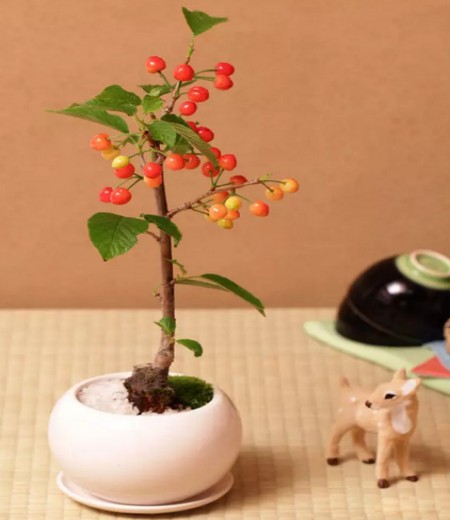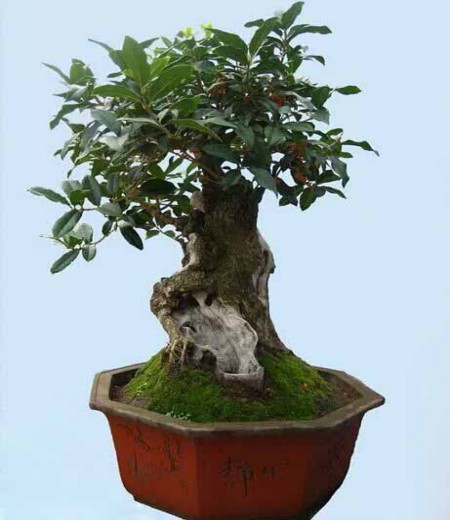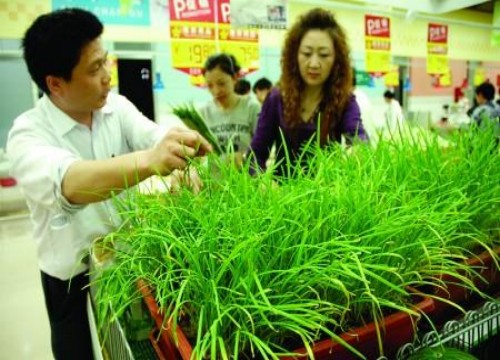Planting method of cherry bonsai
The cultivation of cherry seedlings and the use of soil should be cultivated in loose, fertile and permeable sandy loam. In pot culture, the culture soil was mixed with 4 parts of rotten leaf soil, 3 parts of garden soil, 1 part of fine cinder, sawdust and fine sand. Put some rotten organic fertilizer at the bottom of the basin as base fertilizer. Spring is the best time to plant. Seedlings require a well-developed root system with a stem diameter of about 1 cm and a plant height of 50 to 60 cm.

High altitude crimping method:
Select the branch that is more than two years old, peel the lower part of the branch in a ring near the node (destroy the phloem of the part and cause the cambium above it to take root), then put the moist grass into a transparent plastic bag to wrap the whole wound, and tie up the upper and lower ends. When it takes root, it will be cut under the pressing part, and the pot plant will become a new plant. It is usually chosen in the vigorous growth period of cherries (in late spring and early summer), which is easy to root. Although it is easy to take root, there is a great difference in effect among varieties.
Cutting method:
During the growth period of spring and summer, semi-mature robust branches with diameter 0.7~30px, each segment long 15~500px and epiphytic 4 leaves were selected and inserted into river sand, vermiculite or peat soil or several mixtures were suitable for cooperative nursery bed medium, especially cuttings should be kept moist and shaded. The roots took root about 1.5 ~ 2 months after cuttage, and then transplanted after the root group grew vigorously. If the cuttage method is managed face-to-face, the survival rate will be 60-90%. The cutting method is simple and has the highest success rate.
Real-life method:
After the cherry is harvested, cut the peel and pulp to remove the core, wash the pulp outside the attached core with clean water, and then put it in a cool place to dry for 1 ~ 2 days before sowing. The kernels were sowed directly in a shallow basin during sowing and germinated about 10-30 days after sowing. Wait for the seedling to grow to 5~250px, then transplant it into a plastic basin. Cherry seeds germinate easily, but they do not germinate neatly, and the seeds produced by some plants often lack viable embryos, and the germination rate is often less than 30%. The fruiting age of Fada was late and the quality of seedlings varied greatly.
Grafting method:
Cherry grafting takes cherry seedlings, mountain cherry and cherry blossoms as rootstocks, good cherry varieties as scions, before sprouting in spring, and the best rootstocks are the same or similar to the thickness of scions. When grafting is carried out by split grafting, the upper part of the grafting on the rootstock is selected and the upper part is cut off with sharp shears, and the remaining "pile" is split with a knife, with a depth of about 2-3 cm and the length of the scion.
For about 10 cm, quickly cut the scion into a "wedge" on both sides and insert it into the split; after aligning the cambium, tie it firmly with plastic film strips, without vents, first put it in a cool and ventilated place, and spray water on the ground to keep the environment humid, or use a plastic bag to keep it humid, and then timely ventilation according to temperature changes, do not let the temperature in the bag too high, when there are new buds, remove the plastic bag. And move the plant to a sunny place. Watering should be wet between dry and dry.
Time: 2019-05-25 Click:
- Prev

Planting techniques of Osmanthus fragrans
Potted sweet-scented osmanthus should be planted in spring or autumn, especially in cloudy or rainy days. Choose in a well-ventilated, well-drained and warm place with sufficient light or semi-overcast environment. Transplanting should play a good soil ball to ensure the survival rate. Planting soil is required to be acidic and avoid alkaline soil.
- Next

Bonsai leek that can be eaten and enjoyed
When it comes to leeks, people will think that they can make stuffing and scramble eggs. Recently, leeks were invited into flowerpots in Beisha Town, Wanquan County. Now more and more agricultural products jump out of the traditional production and management mode and are injected with cultural creativity. It has been transformed into bonsai leeks with rich cultural connotations, which can be watched in the living room.
Related
- Fuxing push coffee new agricultural production and marketing class: lack of small-scale processing plants
- Jujube rice field leisure farm deep ploughing Yilan for five years to create a space for organic food and play
- Nongyu Farm-A trial of organic papaya for brave women with advanced technology
- Four points for attention in the prevention and control of diseases and insect pests of edible fungi
- How to add nutrient solution to Edible Fungi
- Is there any good way to control edible fungus mites?
- Open Inoculation Technology of Edible Fungi
- Is there any clever way to use fertilizer for edible fungus in winter?
- What agents are used to kill the pathogens of edible fungi in the mushroom shed?
- Rapid drying of Edible Fungi

